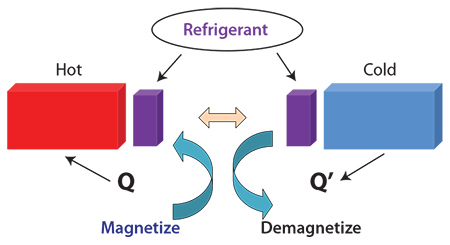Intro:
We have been engaged in the magnetic materials industry since 2006. And gradually expanded our business to the magnetic refrigeration industry according to our experiences and researchs on magnetic materials over past 10 years.

MCE:
Known as magnetocaloric effect, or magnetic card effect, is the basis for magnetic refrigeration materials. Generally, a solid magnetic substance composed of magnetic particles is magnetized when subjected to an external magnetic field, and the magnetic order degree of the system is enhanced (magnetotropy is increased), and heat is absorbed from the outside. The thermal phenomenon exhibited by this magnetic particle system during the application and removal of magnetic fields.
Global warming effect:
Kyle Magnetics dedicated in clean energy and prevents global-warming effect since the very early start. At the 2015 United Nations Climate Change Conference, COP 21, in Paris, world leaders negotiated to limit global warming to below 2°C by 2100. The talks were aimed at avoiding serious climate catastrophes around the world, and participants sought to reduce greenhouse gas emissions by increasing the use of zero carbon technologies.
Magnetic refrigeration is one such emerging, innovative and potential low carbon technology. The interest in it as a new heating or cooling technology – and as an alternative to conventional vapour compression – has grown considerably over the past 15 years.

The principle of magnetic refrigeration is based on a phenomenon we just talked above. Discovered by Emil Warburg in 1881, this was related to the property of exotic materials – such as heavy rare earth element gadolinium and dysprosium – that heat up when a magnetic field is applied to them and cool down when the magnetic field is removed.
Reference:



0 Comments